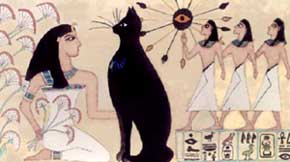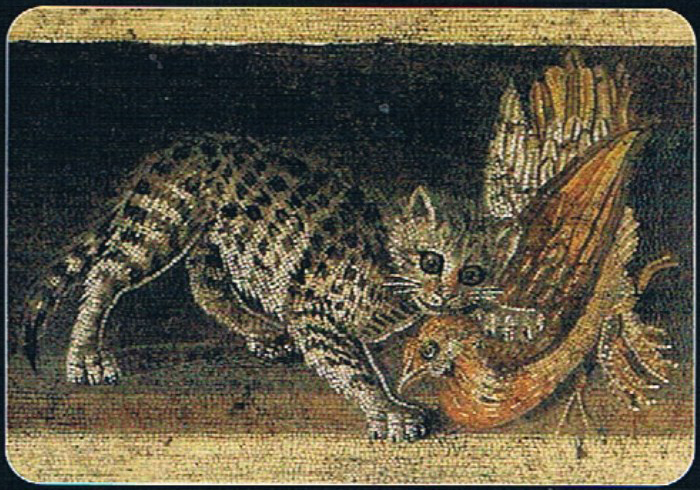There is no evidence (via graffiti or otherwise) that prehistoric man knew the cat, however it is believed that the first contacts with this animal occurred during
the Neolithic, when man began to store crops.

Ancient Egypt
When the ancient Egyptians realized that the cat was an important ally in hunting mice, numerous and avid invaders of crops during the flood periods of the Nile, they began to tame and worship them.
Myeu, as the cat was called, became an integral part of the family and was forbidden to export, under penalty of death. The feline figure was also widely used for the representation of numerous deities, for example Bast or Bastet, who with Skemet was associated with Ra, God of the sun.
East
The spread of the cat in the Middle East was certainly at the hands of the Phoenicians. This feline became important in Arab culture, Muhammad in fact claimed that cats had "the same pride as Arab women".
In China there was a rural God with the appearance of a cat, while the Japanese thought that witches could turn into cats but, at the same time, they thought that cats could also take on human appearance.

Europe
Thanks to the Phoenicians and Romans, cats arrived in Europe in the Ptolemaic age (304 - 330 BC), in Greece it was not very successful, in fact it was not considered a useful animal, it appeared in very few writings, including those of Aesop .
The Romans used the cat as a substitute for the weasel, to hunt mice, rats and moles. It became, for this people, also a symbol of victory, so they transported it throughout Northern Europe.
Christianity, the black cat brings bad luck
However, after years in which he received protection, with the coming of Christianity, he was demonized and persecuted, Christians associated him with gods of the past and witches, for this reason, according to medieval tradition, the cat (especially black) is a symbol of bad luck.